Modeling in Science
Modeling in science is the process of creating simplified representations of complex systems or phenomena in order to understand and explain how they work. Models can take many forms, including physical models, mathematical models, computer simulations, and conceptual models. Scientists use models to make predictions, test hypotheses, and communicate their understanding of the natural world.
Types of Models
- Physical Models: These are tangible representations of objects or systems, such as a scale model of the solar system or a 3D-printed model of a molecule.
- Mathematical Models: These models use mathematical equations and formulas to describe and predict the behavior of a system, such as the use of equations to model the trajectory of a projectile.
- Computer Simulations: These are digital models that mimic the behavior of complex systems, such as climate models or simulations of population dynamics.
- Conceptual Models: These are simplified mental models that help scientists understand and communicate complex concepts, such as the Bohr model of the atom.
Why Use Models?
Models allow scientists to:
- Explore complex systems in a controlled and repeatable way.
- Make predictions and test hypotheses without the need for expensive or time-consuming experiments.
- Visualize and communicate abstract or difficult-to-understand concepts.
- Understand the relationships and interactions within a system.
Study Guide
Here are some key points to remember about modeling in science:
- What is modeling in science?
- What are the different types of models used in science?
- Why do scientists use models?
- How do models help scientists understand complex systems?
- Give examples of real-world applications of different types of models.
Understanding the concept of modeling is essential for grasping many scientific principles. As you study this topic, be sure to consider how models are used in different scientific fields and how they contribute to our understanding of the natural world.
[Modeling] Related Worksheets and Study Guides:
.◂Science Worksheets and Study Guides Third Grade. Science in our world - 3rd gr.
Study Guide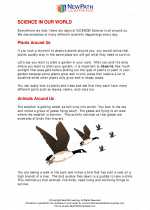 Science in our world - 3rd gr.
Science in our world - 3rd gr.  Worksheet/Answer key
Worksheet/Answer key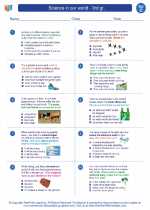 Science in our world - 3rd gr.
Science in our world - 3rd gr.  Worksheet/Answer key
Worksheet/Answer key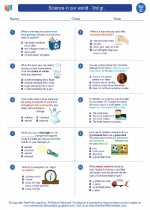 Science in our world - 3rd gr.
Science in our world - 3rd gr.  Worksheet/Answer key
Worksheet/Answer key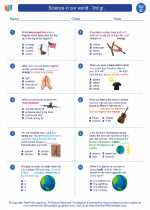 Science in our world - 3rd gr.
Science in our world - 3rd gr.  Worksheet/Answer key
Worksheet/Answer key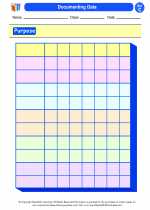 Documenting Data
Documenting Data 

 Worksheet/Answer key
Worksheet/Answer key
 Worksheet/Answer key
Worksheet/Answer key
 Worksheet/Answer key
Worksheet/Answer key
 Worksheet/Answer key
Worksheet/Answer key

The resources above cover the following skills:
History and Nature of Science: A student should understand the history and nature of science. A student who meets the content standard should:
Develop an understanding that historical perspectives of scientific explanations demonstrate that scientific knowledge changes over time, building on prior knowledge.
Develop an understanding that scientific knowledge is ongoing and subject to change as new evidence becomes available through experimental and/or observational confirmation(s).